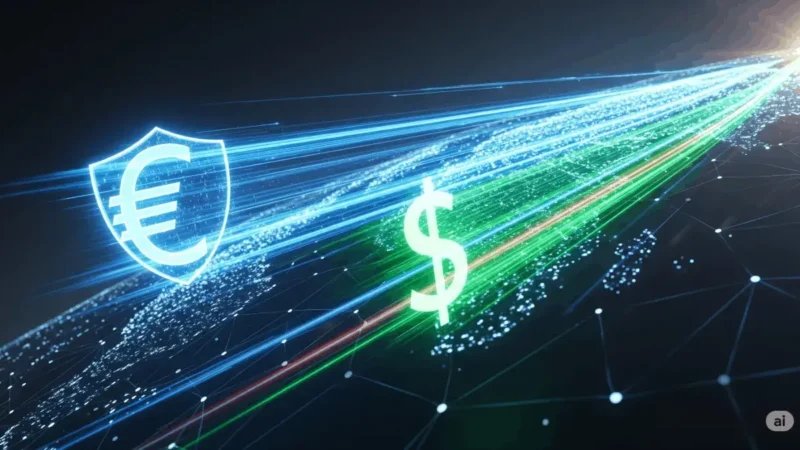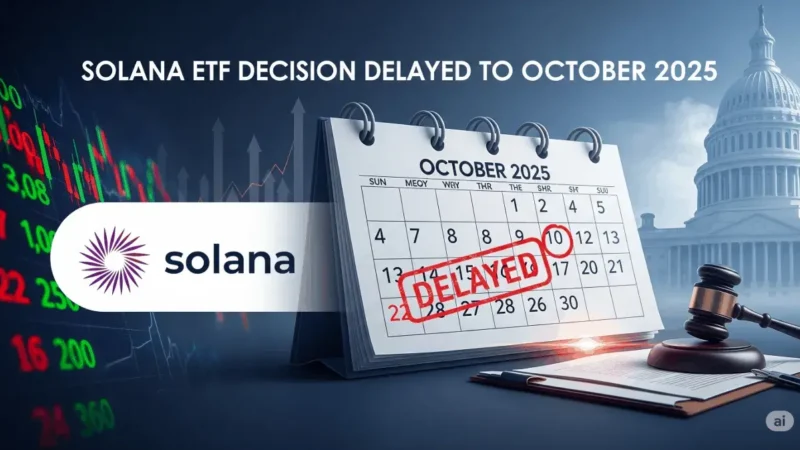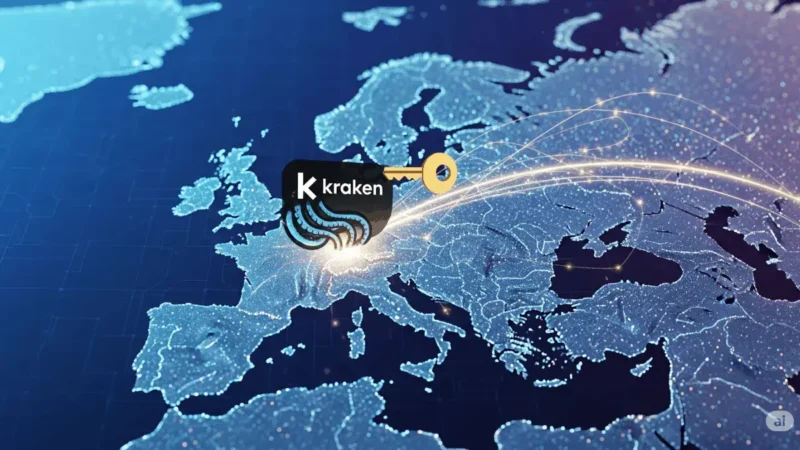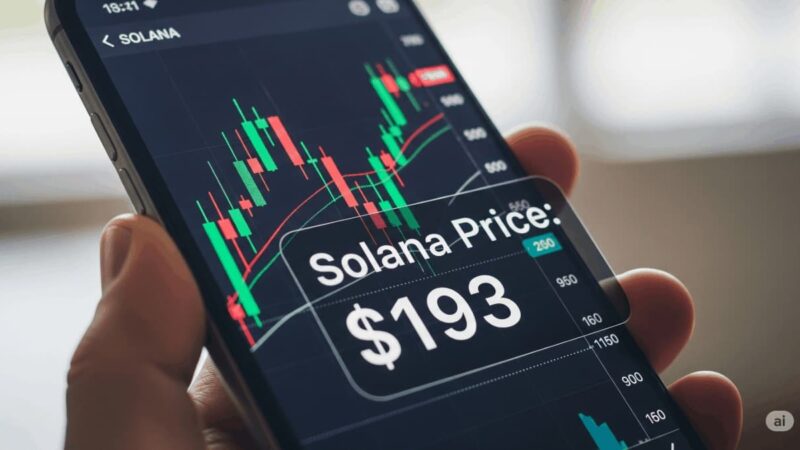Gold Rush in a Digital Age: The Surge of Commodity-Backed Cryptocurrencies

In an unprecedented week for the digital asset space, commodity-backed cryptocurrencies, a class of assets bridging the gap between traditional finance and blockchain technology, have experienced a historic surge in issuance. This dramatic increase, driven almost entirely by gold-backed tokens, has pushed weekly issuance volumes to their highest level in at least five years. The new record, more than doubling the previous peak set in 2021, signals a significant shift in investor sentiment and a growing appetite for tangible assets in a volatile global economy.
The catalyst for this sudden gold rush in the crypto world was a political and economic shockwave originating from international trade. A warning from the Swiss Precious Metals Association, a key industry body, about a potential 39 percent U.S. tariff on Swiss imports sent ripples through the gold market. Switzerland, a global hub for gold refining and a major exporter to the United States, was at the center of the storm. The news caused gold futures to briefly hit a new all-time high of $3,500, a move that immediately drew attention to its digital counterparts.
While the tariff threat was later clarified by a White House official, causing both spot and futures gold prices to recede, the initial market reaction was enough to fuel an incredible minting frenzy for gold-backed tokens. This event highlights the unique position of commodity-backed cryptocurrencies as a responsive and agile alternative for investors seeking exposure to precious metals without the logistical hurdles of physical ownership.
The Spark: Geopolitical Tensions and Market Reaction
The narrative of this surge is a clear example of how macro-economic events can directly influence the crypto market. Switzerland, a nation with no gold mines of its own, is a powerhouse in the global gold trade, refining over 50% of the world’s gold. It acts as a central hub, receiving raw gold from various sources and refining it into the high-quality bars that are a standard for global markets, including the widely-traded one-kilo bars on the Comex futures market in New York.
The announcement of a 39% tariff on Swiss imports, a move reportedly aimed at addressing a growing trade imbalance, was a significant blow. Christoph Wild, president of the Swiss Association of Manufacturers and Traders in Precious Metals, called the ruling “another blow” to Switzerland’s trade relationship with the U.S. The reclassification of one-kilo and 100-ounce gold bars as taxable goods effectively made it economically unviable for Swiss refineries to export them to the U.S. This not only created a supply shock but also injected a new level of uncertainty into the global bullion trade.
The immediate market response was a classic flight to safety. Investors, anticipating a tightening of supply and potential price increases, drove gold futures to a record high. This quick and decisive reaction underscored gold’s enduring status as a hedge against geopolitical and economic instability.
The Role of Gold-Backed Tokens in the Modern Market
Commodity-backed cryptocurrencies, particularly those linked to gold, offer a unique value proposition that allows them to capitalize on such market movements. Backed by physical reserves stored in secure vaults, these tokens provide all the benefits of gold ownership—a tangible, time-tested store of value—with the efficiency and accessibility of a digital asset.
Tokens like Tether Gold (XAUT) and Paxos Gold (PAXG) briefly topped $3,390, mirroring the jump in futures prices. These tokens, which are built on public blockchains, can be transferred instantly across borders, bypassing the traditional, often slow and costly, process of moving physical bullion. This capability is especially critical in times of market stress when speed is of the essence. The ability to transact in fractions of a troy ounce also lowers the barrier to entry, allowing a broader range of investors to gain exposure to gold.
According to RWA.xyz, a platform specializing in tokenized real-world assets, mintage volumes for commodity-backed cryptocurrencies reached an astonishing $439 million in a single week. This is more than double the previous record of $195 million set in 2021, and a clear indicator of the rapidly expanding market for these digital assets.
An Evolving Landscape for Commodity-Backed Cryptocurrencies
The growth of commodity-backed cryptocurrencies is part of a larger trend known as Real-World Asset (RWA) tokenization. This movement aims to bring traditional assets like real estate, art, and commodities onto the blockchain, unlocking new levels of liquidity, transparency, and accessibility. For gold, a market long dominated by institutional players and complex financial instruments like ETFs and futures, this offers a revolutionary new paradigm.
The Benefits of Digital Gold
There are several compelling reasons behind the growing popularity of gold-backed tokens.
- Accessibility and Fractional Ownership: Unlike physical gold, which is often bought in large, expensive bars or coins, tokens allow for fractional ownership. An investor can buy a tiny fraction of a troy ounce, making gold investment accessible to anyone with a crypto wallet, regardless of their capital.
- Liquidity and Tradability: Gold-backed tokens can be traded 24/7 on global cryptocurrency exchanges, offering far greater liquidity than traditional gold markets. Selling physical gold can involve finding a buyer, verifying the gold’s authenticity, and waiting for settlement. With a token, the process is instantaneous.
- Security and Transparency: The physical gold backing these tokens is held in audited vaults. Issuers like Tether Gold and Paxos Gold provide regular attestations to prove that their reserves match the number of tokens in circulation. This transparency, a core feature of blockchain technology, provides a level of trust that can be difficult to achieve in other forms of gold ownership.
- Elimination of Storage Costs: Owning physical gold comes with the cost and hassle of secure storage, whether in a home safe or a bank vault. Gold-backed token holders effectively pay a nominal fee to the token issuer, which is far more efficient than managing physical security.
Challenges and Future Outlook
Despite the recent surge, commodity-backed cryptocurrencies face challenges. Regulatory uncertainty remains a significant concern. While some jurisdictions are moving to embrace these assets, others are still grappling with how to classify and regulate them. The reliance on a custodian to hold the physical asset is another potential point of failure, although the transparent attestations by major issuers help to mitigate this risk.
Stay informed, read the latest news right now!
However, the future for commodity-backed cryptocurrencies looks promising. The recent market event has demonstrated their utility as a responsive, liquid, and accessible vehicle for traditional asset exposure. As the world becomes more interconnected and digital, the appeal of a financial instrument that combines the timeless value of gold with the borderless efficiency of blockchain is likely to grow. The record-breaking issuance of these tokens this week is not just a market anomaly—it may be a glimpse into the future of how we invest in and interact with traditional assets.






